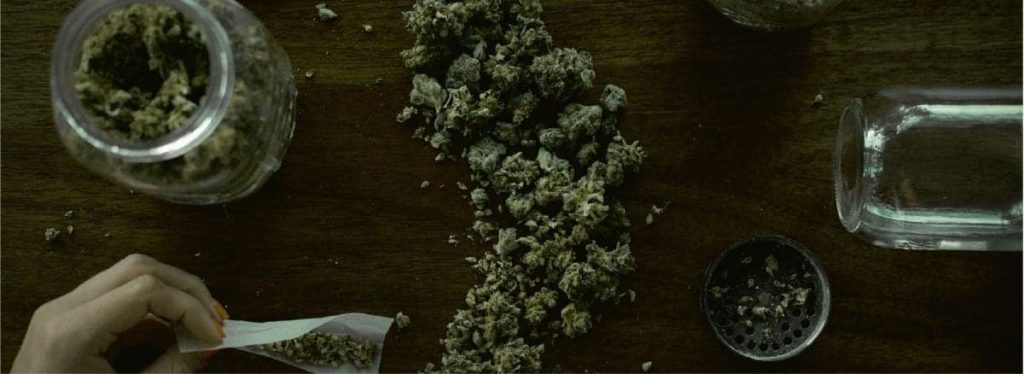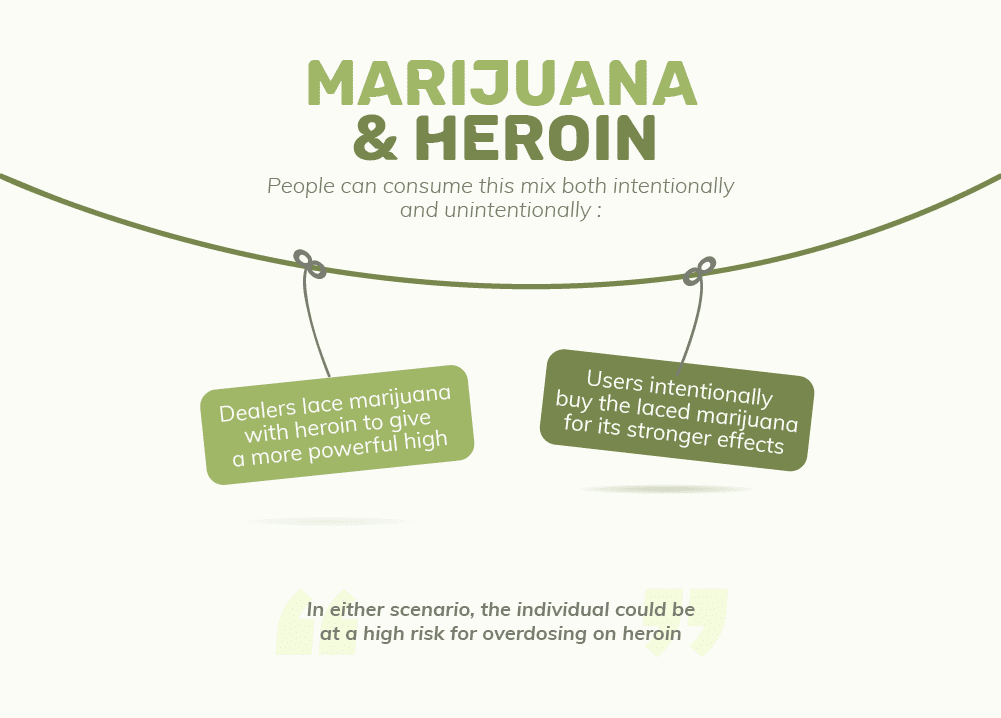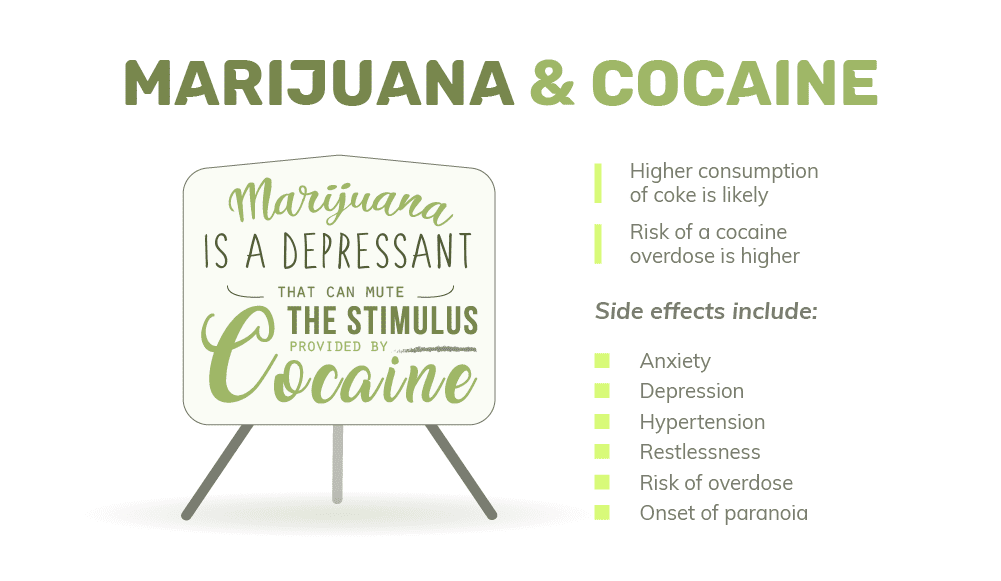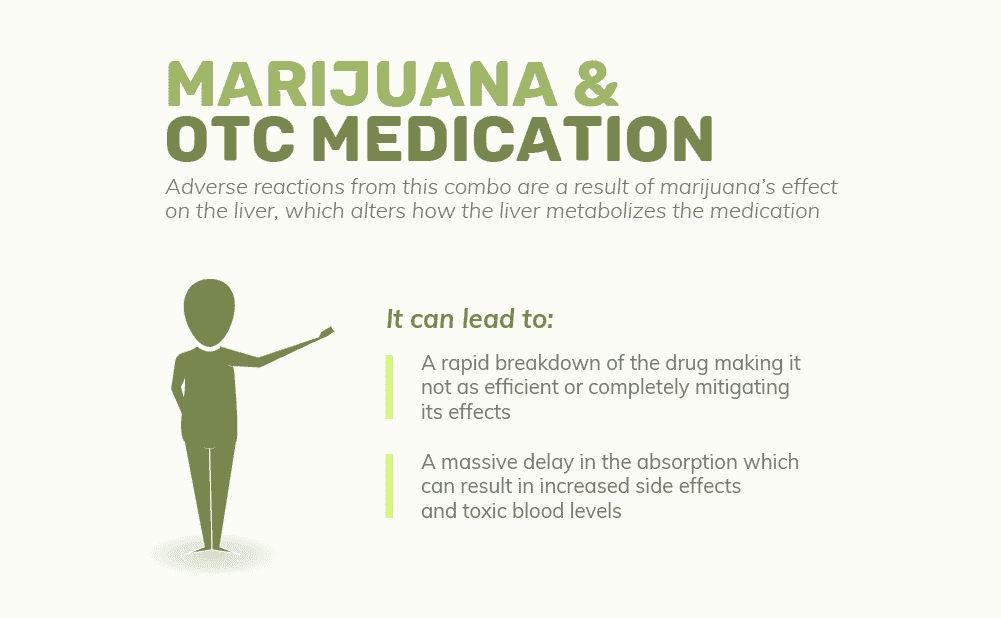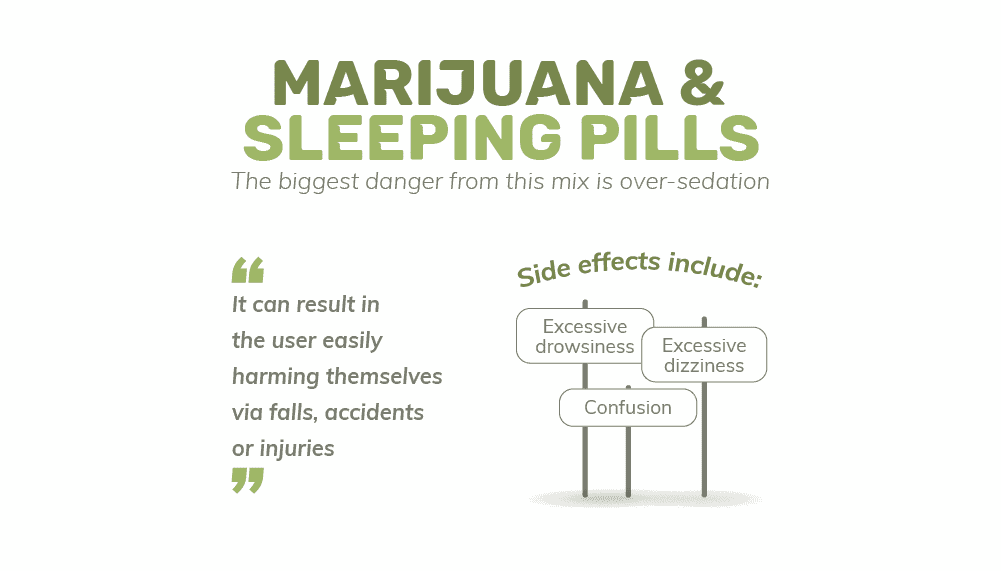DISCLAIMER: Northpoint Recovery is a 12-step evidence-based program. We unequivocally do NOT recommend the use of ANY addictive or mind-altering substances, including marijuana. At the same time, we realize that marijuana is easily available to many people in America. Therefore, we are providing the following public safety information. As more states make medicinal and recreational marijuana legal, it is important to fully understand what potential drug interactions and side effects may occur when weed is used in combination with other common substances – alcohol, prescription medications, and illicit drugs, for example.
“Get your loved one the help they need. Our substance use disorder program accepts many health insurance plans, this is our residential program.”
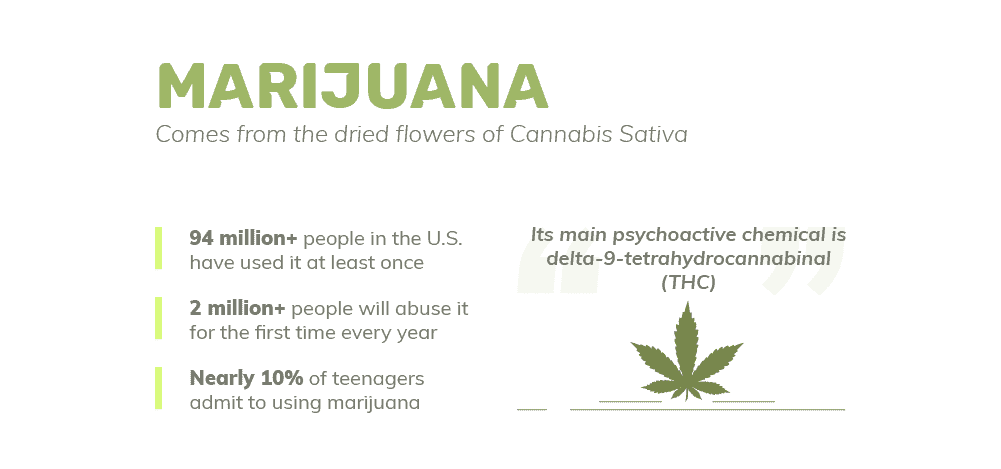

Marijuana and Alcohol
“The significantly higher blood THC… values with alcohol possibly explain increased performance impairment observed from cannabis-alcohol combinations.” Dr. Marilyn A. Huestis, PhD, National Institute on Drug Abuse Alcohol and marijuana are the two most widely-used intoxicants in the United States. With that in mind, it should come as no surprise that they are often used together. In fact, a person who is addicted to marijuana has a doubled risk of alcohol addiction. 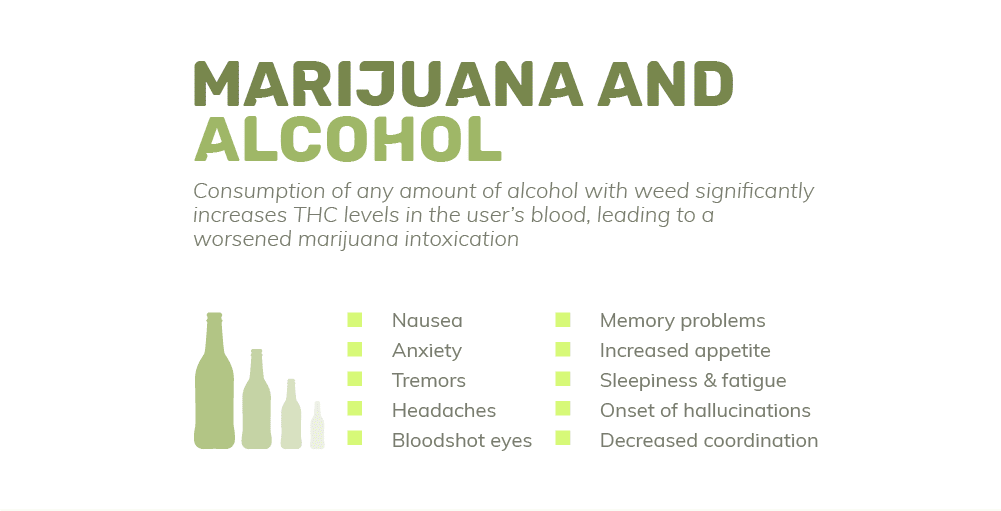
Drinking and Smoking Pot – Dangerous Intoxication
But when a person uses cannabis and alcohol in combination, the effects of both substances are intensified, sometimes, to a dangerous degree. For example:
- According to the American Association for Clinical Chemistry, the consumption of ANY amount of alcohol when using weed significantly increases THC levels in the user’s blood. Obviously, this leads to worsened marijuana intoxication.
- Excessive cannabis consumption may lead to an experience known as “greening out”. The user will start to feel sick – sweaty, pale, nauseous, and dizzy. Some describe feeling as if the room is spinning. Alcohol worsens the effects of greening out. Because alcohol directly affects balance, drinking after smoking pot can lead to dangerous falls and injuries.
- Conversely, too much alcohol can make you nauseous. But smoking marijuana after drinking can be dangerous because cannabis is an antiemetic – it eases queasiness and makes it harder for you to throw up. This could lead to a) choking on your own vomit, or b) alcohol poisoning.
- The combination of drinking and smoking pot results in a risk of a fatal automobile crash that is 12 times higher than that of cannabis alone.
Marijuana and Opioid Painkillers
While there is some evidence to suggest that combining prescription opioids and marijuana may aid in pain relief, there is still ample cause for caution. Pot and opioid drugs both activate the reward pathways of the brain, which can “prime” the brain for an increased risk of dependence and addiction to weed. This is especially true for people who are already genetically, environmentally, or psychologically vulnerable. The Centers for Disease Control and Prevention report that a person who is addicted to cannabis is 40 times more likely to be addicted to opioid painkillers. There are literally DOZENS of prescription opioid formulations that should never be taken with marijuana:
- Buprenorphine: (Butrans, Subutex, Suboxone, Zubsolv)
- Codeine: (Tuzistra XR, Tylenol 3 and 4)
- Fentanyl: (Abstra, Actiq, Duragesic, Fentora, Onsolis, Sublimaze)
- Hydrocodone: (Co-Gesic, Hycodan, Hydromet, Hyset, Hysingla, Ibudone, Liquicet, Lorcet, Lortab, Maxidone, Norco, Reprexain, Rezira, TussiCaps, Tussionex, Vicodin, Vicoprofen, Vituz, Xodol, Zohydro ER, Zolvit, Zutripro, Zydone)
- Hydromorphone: (Anexia, Dilaudid, Exalgo, Palladone)
- Meperedine: (Demerol)
- Methadone: (Dolophine, Methadose)
- Morphine: (Avinza, Embeda, Kadian, Morphabond, MS Contin, Oramorph, Roxanol T)
- Oxycodone: (Oxaydo, Oxyset,OxyContin, Percocet, Percodan, Roxicet, Targiniq, XTampa ER, Xartemis XR)
- Oxymorphone: (Opana ER, Numorphan)
- Tapentadol: (Nucynta, Palexia, Tapal)
Marijuana and Heroin
The use of heroin is increasing in the United States as the global supply is at an all-time high. Purity levels are up while prices are down. Heroin deaths in America have nearly tripled since 2012. As with other opioids, the concurrent use of heroin and weed leads to a greater likelihood of addiction. According to the CDC, a marijuana addict has a tripled risk of heroin addiction. But this combination is even more dangerous, because with heroin, the risk of overdose is much greater than it is with prescription killers. In fact, annually, roughly 1 out of every 4 heroin addicts will experience an overdose, and 70% will overdose at least once during their lifetime. Complicating the matter is the fact that on the street, heroin purity varies widely. A dose from one batch may produce the expected high, while the equivalent dose from another batch could be deadly. Even worse, cheap, low-grade heroin is often laced with or completely replaced by much-stronger fentanyl, which is 50 times more potent than 100% pure heroin. At this strength, the difference between life and death can be measured in micrograms. How does marijuana make this problem worse? Because smoking pot clouds judgment and damages memory, a person who is already high will have problems telling the difference between the two drugs. Also, a marijuana-impaired person can misremember when they took their last dose or how much they took. Of special relevance, a frightening South African cannabis-heroin cocktail known as nyaope has begun making inroads in the West.
“We treat both addiction and co-occurring disorders and accept many health insurance plans. Take a look at our inpatient program.”
Marijuana and Methamphetamine
“It’s not sensible to wait for absolute proof that cannabis is a component cause of psychosis. There’s already ample evidence to warrant public education around the risks of heavy use of cannabis, particularly the high-potency varieties. For many reasons, we should have public warnings.” ~ Sir Robin Murray, King’s College Approximately 44% of methamphetamine users combine the drug with marijuana. The biggest danger from this combination appears to be a greater risk of psychosis – a severe mental illness associated with loss of reality. One study of emergency room visits concluded that 44% of subjects presenting with at least one psychotic symptom had substance-induced psychosis. Significantly, both pot and meth are individually associated with psychosis:
- Japanese studies of meth users determined that 76% had a “paranoid psychotic state with hallucinations”.
- American studies that were narrower in definition say that between 26% and 46% of methamphetamine-dependent people also suffer from associated psychosis.
- Heavy cannabis users have a risk of psychotic symptoms that is up to 200% higher than nonusers.
Marijuana and Cocaine
“With its increasing availability and legalization in some states, people need to know that marijuana may be harmful to the heart and blood vessels of some people.” ~ Dr. Amitoj Singh, M.D., St. Luke’s University As with other substances, mixing cocaine with weed increases the risk of edition. The CDC reports that marijuana addicts are 15 times more likely to also be addicted to cocaine. But this combination also presents hazards to your physical health. Both substance have been linked to a much-higher risk of stroke and heart failure:
- Cannabis users have a 26% higher risk of stroke.
- The heart attack risk is 10% higher.
- Compared to users, pot users are twice as likely to suffer with stress cardiomyopathy.
- This makes them at tripled risk of cardiac arrest.
- They are four times as likely to have an abnormal heartbeat requiring a defibrillator implant.
- In an analysis of ER visits involving cocaine-dependent patients, 56% presented with cardiovascular problems.
- 40% experienced chest pain.
- Cocaine users have up to 35% worsened aortic stiffening.
- They also have 18% greater thickening in the left ventricular wall of the heat.
- Within the 24 hours following cocaine use, the risk of stroke spikes nearly sevenfold.
- Using pot and coke together can trigger a more than 54% increase in the person’s non-resting heart rate.
The American Heart Association has called cocaine the “perfect heart attack drug”.
Marijuana and Prescription Drugs
Weed can prompt adverse drug interactions with many specific prescription medications and even entire drug classes. Either may intensify the effects of the other, or marijuana may interfere with a medication’s desired effects. Some specific medications should never be taken with marijuana because of adverse effects include:
- Antipyrine (NSAID for inflammation and fever) – Marijuana slows down how quickly the body metabolizes antipyrine, leading to increased side effects.
- Cartizem/Diltiazem (treats angina, arrhythmia, and hypertension) – Marijuana use impairs absorption and increases side effects.
- Chlorzoxazone (muscle relaxant for spasms) –Marijuana may reduce this medication’s effectiveness.
- Ciclosporin (immunosuppressive given for rheumatoid arthritis, Crohn’s disease, psoriasis, and organ reception) – Marijuana increases the speed of metabolization, increasing possible side effects.
- Clarithromycin/Biaxin (given to treat bacterial infections) – Because marijuana slows down how the liver breaks down this medication, side effects are intensified.
- Disulfiram/Antabuse (anti-drinking medication)—Using cannabis with disulfiram may induce hypomania—excitability, disinhibition, and irritability.
- Estrogen (birth control and menopause) – Marijuana slows down absorption, leading to worsened side effects.
- Indinavir/Crixivan (HIV/AIDS treatment) – Marijuana decreases the speed with which this drug is absorbed, causing increased side effects.
- Isoflurane (general anesthetic) – Marijuana changes how isoflurane is broken down by the liver, decreasing its effectiveness.
- Lovastatin/Mevacor (anti-cholesterol) – Marijuana slows down absorption, increasing Lovastatin’s side-effects.
- Theophylline (treatment for COPD and asthma) – This medication is less effective when used simultaneously with marijuana.
Marijuana can also interfere with a patient taking their prescription medications as directed. Almost 8% of patients testing positive for cannabis also tested negative for their legitimately-prescribed medications.
Marijuana and Anticoagulants
Blood clotting is slowed by marijuana use, thereby increasing the risk of excessive bleeding and bruising. Some anticoagulants that should NEVER be taken in combination with weed include:
- Clopidogrel/Plavix (heart disease and stroke)
- Dalteparin/Fragmin (pulmonary embolism and thrombosis)
- Enoxaparin/Lovenox (pulmonary embolism and thrombosis)
- Heparin (pulmonary embolism, thrombosis, and arterial thromboembolism)
- Wafarin/Coumadin (pulmonary embolism, thrombosis, stroke prevention)
Marijuana and Antidepressants
Mixing antidepressants and marijuana can increase the side effects of the medication – confusion, difficulty concentrating, drowsiness, dizziness, cognitive impairment, poor judgment, and worsened motor coordination. In addition, using weed while taking SSRI antidepressants may result in increased incidence of mania – racing thoughts, restlessness, distractibility, poor impulse control, and irritability. Concurrent use of SNRI antidepressants and cannabis can cause the body’s serotonin levels to fluctuate wildly, possibly resulting in sudden serotonin syndrome, a potentially life-threatening condition characterized by poor coordination, jerky movements, tremors, and muscle rigidity. Finally, both pot and tricyclic antidepressants can cause hypertension and tachycardia, even in individuals without a current heart condition. Examples of SSRI antidepressants:
- Citalopram (Celexa)
- Escitalopram (Lexapro, Cipralex)
- Paroxetine (Paxil, Seroxat)
- Fluoxetine (Prozac)
- Fluvoxamine (Luvox, Faverin)
- Sertraline (Zoloft, Lustral)
Examples of SNRI antidepressants:
- Desvenlafaxine (Pristiq)
- Duloxetine (Cymbalta)
- Levomilnacipran (Fetzima)
- Milnacipran (Ixel, Savella)
- Venlafaxine (Effexor)
Examples of tricyclic antidepressants:
- Amitriptyline (Elavil, Endep)
- Amitriptylinoxide (Amioxid, Ambivalon, Equilibrin)
- Clomipramine (Anafranil)
- Desipramine (Norpramin, Pertofrane)
- Dibenzepin (Noveril, Victoril)
- Dimetacrine (Istonil)
- Dosulepin (Prothiaden)
- Doxepin (Adapin, Sinequan)
- Imipramine (Tofranil)
- Lofepramine (Lomont, Gamanil)
- Melitracen (Dixeran, Melixeran, Trausabun)
- Nitroxazepine (Sintamil)
- Nortriptyline (Pamelor, Aventyl)
- Noxiptiline (Agedal, Elronon, Nogedal)
- Opipramol (Insidon)
- Pipofezine (Azafen/Azaphen)
- Protriptyline (Vivactil)
- Trimipramine (Surmontil)
Marijuana and Antipsychotics
Antipsychotic medications are used to manage the symptoms of psychosis, especially as they present in patients with bipolar disorder or schizophrenia. However, using marijuana while taking an antipsychotic can result in reduced blood plasma levels of the medication. Not only does this limit their effectiveness, but cannabis use is also itself associated with psychotic events, worsened depressive episodes, and rapid, unpredictable mood cycling. Complicating this problem is the fact that regular weed users are not typically compliant with their medication schedules. This is particularly important because missing even a single dose of a mood-stabilizing medication can trigger psychotic flareups. Examples of FDA-approved antipsychotics include:
- Aripiprazole (Abilify)
- Asenapine Maleate (Saphris)
- Chlorpromazine (Thorazine)
- Clozapine (Clozaril)
- Droperidol (Innovar)
- Fluphenazine (Prolixin)
- Haloperidol (Haldol)
- Iloperidone (Fanapt)
- Loxapine
- Lurasidone (Latuda)
- Molindobe (Moban)
- Olanzapine (Zyprexa)
- Paliperidone (Invega)
- Perphenazine (Trilafon)
- Pimozide (Orap)
- Quetiapine (Seroquel)
- Risperidone (Risperdal)
- Tiotixene (Navane)
- Trifluoperazine
- Ziprasidone (Geodon)
Marijuana and Barbiturates
Although they have largely been replaced as sleeping aids or anxiety medications by safer benzodiazepines, sedating barbiturates ARE still used. They are used to treat anxiety, insomnia, and cluster or migraine headaches. They are also used as general anesthetics and in assisted suicides. Drug experts caution against the simultaneous use of barbiturates and cannabis, because the combination may cause excessive drowsiness that can lead to accidents and injury. Barbiturate medications include:
- Allonal
- Amobabital sodium
- Amytral sodium
- Aprobarbital
- Brevitol
- Butabarb
- Butabarbital
- Butalan
- Buticaps
- Butisol sodium
- Luminal
- Mebaral
- Mephobarbital
- Mephyltaletten
- Methohexial
- Nembutal
- Oramon
- Pentobarbital
- Pentothal
- Phemiton
- Primidone
- Prominal
- Sarisol
- Secobarbital
- Somnifaine
- Surital
- Thiopental sodium
- Thyamilal
Marijuana and Benzodiazepines
Benzodiazepines are prescribed as anti-anxiety medications, sleeping aids, anticonvulsants, and muscle relaxants. As with barbiturates, the concurrent use of both benzos and weed can lead to over-sedation, with such side effects as confusion, inability to concentrate, excessive drowsiness. This can lead to accidents, injury, and dangerous dosage errors. In the United States, the following benzodiazepines are approved by the FDA:
- Alprazolam/Xanax (anxiety and panic disorders)
- Chlordiazepoxide/Librium (anxiety and alcohol withdrawal)
- Clobazam/Onfi (anxiety and epileptic seizures)
- Clonazepam/Klonopin (panic disorder, seizures, and movement disorders)
- Clorazepate/Tranxene (anxiety, alcohol withdrawal, insomnia, and epileptic seizures)
- Diazepam/Valium (anxiety, alcohol/benzodiazepine/opioid dependence, insomnia, and panic attacks)
- Estazolam/ProSom (insomnia)
- Flunitrazepam/Rohypnol – “Roofies” are illegal in the United States but are used illicitly, primarily as a date rape drug.
- Flunitrazepam/Dalmane (mild/moderate insomnia)
- Lorazepam/Ativan (anxiety, alcohol withdrawal, insomnia, epileptic seizures, surgical procedure amnesia, and nausea or vomiting caused by chemotherapy)
- Midazolam/Versed (anxiety, anesthesia, insomnia, and sedation for medical procedures)
- Nitrazepam/Alodorm (insomnia and age-dependent epilepsy)
- Oxazepam/Seresta (insomnia, anxiety, alcohol withdrawal) – Oxazepam is the most-frequently detected illicitly-used prescription drug among recreational marijuana users.
- Quazepam/Doral (insomnia)
- Temazepam/Restoril (severe insomnia)
- Triazolam/Halcion (anxiety for medical or dental procedures, jet lag)
Although they are considered safe and effective for short-term use, benzodiazepines are among the most addictive and abused prescription medications. The use of any mood-altering substance – in this case, marijuana – that helps prime the brain for addiction is discouraged.
Marijuana and OTC Medications
Many people are surprised to learn that mixing over-the-counter medications and pot can be problematic. In most cases, the adverse reaction is caused by a marijuana -induced change in the way the user’s liver metabolizes the medication. This can either lead to rapid breakdown and decreased effectiveness, or delayed absorption resulting in increased side effects and toxic blood levels.
- Acetaminophen/Tylenol (pain relief and fever)
- Aspirin (pain, fever, and inflammation)
- Cimetidine/Tagamet (antacid)
- Cetirizine/Zyrtec (antihistamine given for allergies)
- Diclofenac/Voltaren/Cataflam (NSAID for pain and inflammation)
- Diphenhydramine/Benadryl (antihistamine given for allergies)
- Fexofenadine/Allegra (antihistamine given for allergies)
- Ibuprofen/Advil/Motrin (pain)
- Loperamide/Imodium (diarrhea and gas)
- Loratadine/Claritin/Alavert (antihistamine given for allergies and hives)
- Naproxen/(NSAID for pain, swelling, stiffness, and fever)
- Ranitidine/Zantac (antacid)
Marijuana and Pump Medications
Some medications are moved into cells via pumps. Marijuana can interfere with these pumps, increasing both the amount of medication that and gets absorbed and the potential side effects. Drug interactions with these medications is especially concerning, since most of them are used to treat life-threatening conditions. Some of the medications that interact with weed include:
- Cisapride/Propulsid (gastroesophageal reflux disease, or GERD)
- Corticosteroids (inflammation, immune response)
- Diltiazem (angina, arrhythmia, and hypertension)
- Erythromycin (bacterial infections)
- Etoposide/Etophos (chemotherapy)
- Itraconazole (fungal infections)
- Ketoconazole (fungal infections)
- Nelfinavir/Viracept (HIV)
- Paclitaxel (chemotherapy)
- Quinidine (arrhythmia)
- Saquinavir/Invirase/Fortovase (HIV/AIDS)
- Verapamil (angina, hypertension, tachycardia)
- Vinblastine (chemotherapy)
- Vincristine/Oncovin (chemotherapy)
- Vindesine (chemotherapy)
Marijuana and Sleeping Pills
Over-sedation is the biggest hazard associated with mixing marijuana and non-benzodiazepine sleeping medications. Taking both substances together can result in excessive drowsiness, dizziness, and confusion. Driving or operating heavy machinery is not recommended, and there is a real concern about falls, accidents, and injuries. The three most popular non-benzodiazepine sleeping medications are:
- Eszopiclone (Lunesta)
- Zaleplon (Sonata)
- Zolpidem (Abilify)
“We accept many health insurance plans. Get your life back in order, take a look at our residential program.”
What Does All of This Mean?
The first take-away from this list should be a better understanding of how many different kinds of medications there are that can be affected by marijuana use. The truth is, pot interferes with so many other common substances that encountering this problem is a virtual certainty for regular users. The second take-away then, should be an increased sense of watchfulness and care. While on its own, marijuana is not generally associated with major side effects, some interactions can be dangerous or even life-threatening. Any inattention or lack of awareness could result in a serious adverse reaction. Finally, this list demonstrates the critical importance of open communication with your healthcare providers. Based on this information, if you use weed in any form:
- ALWAYS discuss your marijuana use – legal or not – with your doctor or dentist. Don’t wait for them to ask – be proactive.
- When prescribed any medication, ask your doctor about any possible interactions.
- As an additional safeguard, when picking up your prescription, talk with your pharmacist.
- If you experience any negative reactions, contact your healthcare provider IMMEDIATELY.
- Remember to discontinue marijuana use prior to any surgical or major dental procedures.
Like any intoxicating substance, marijuana cavities certain inherent risks. But with diligent attention, dangerous drug interactions don’t have to be among them.
What Did you Think About This Blog?
Give it a Rating!

